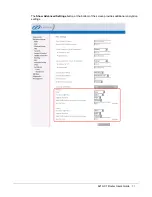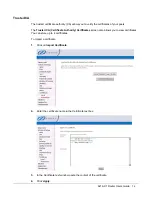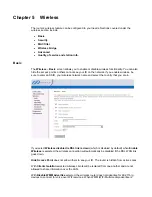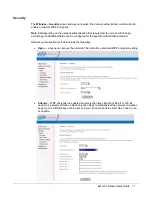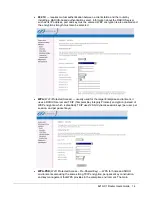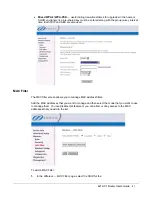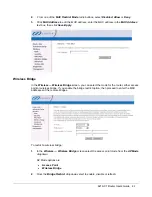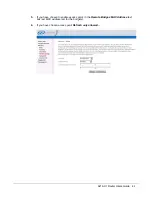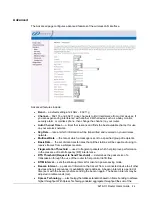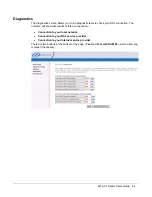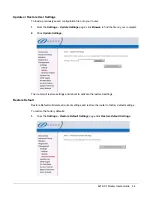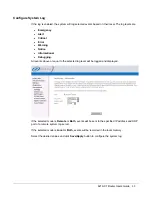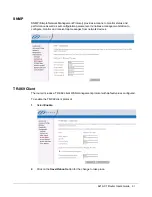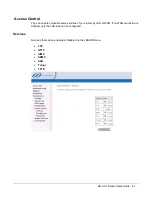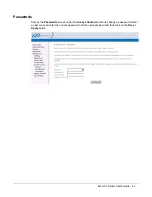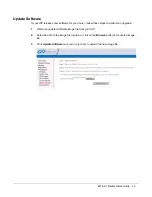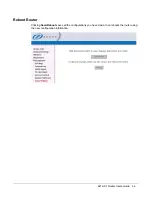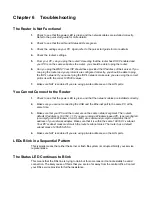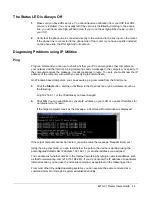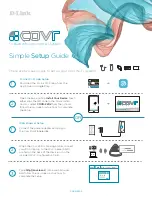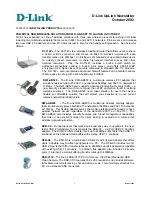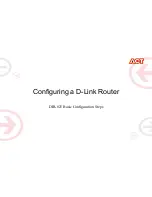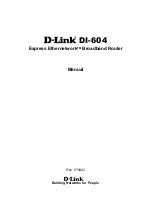
individual throughput speeds of each client on the network) can improve by up to 25% in 802.11g
only networks and up to 75% in mixed networks comprised of 802.11g and 802.11b equipment.
•
54g Mode
— 54g is a Broadcom Wi-Fi technology.
•
54g Protection
— the 802.11g standards provide a protection method so 802.11g and
802.11b devices can co-exist in the same network without “speaking” at the same time. Do
not disable 54g Protection if there is a possibility that a 802.11b device may need to use
your wireless network. In Auto Mode, the wireless device will use RTS/CTS (Request to
Send / Clear to Send) to improve 802.11g performance in mixed 802.11g/802.11b
networks. Turn protection off to maximize 802.11g throughput under most conditions.
•
Preamble Type
— this information relates to wireless communication based
•
Transmit Power
— select from 20%, 40%, 60%, 80% and 100%. The default value is
100% but can be changed.
•
WMM (Wi-Fi Multimedia)
— prioritizes traffic from different applications such as voice,
audio and video applications under different environments and conditions.
•
WMM No Acknowledgement
— the acknowledgement policy used on the MAC level.
Enabling no-acknowledgement can result in efficient throughput but higher error rates in a
noisy Radio Frequency (RF) environment.
•
WMM APSD
— APSD (Automatic Power Save Delivery). APSD manages radio usage for
battery-powered devices to allow battery life in certain conditions. APSD allows a longer
beacon interval until an application—VoIP for example—requiring a short packet exchange
interval starts. Only if the wireless client supports APSD does APSD affect radio usage and
battery life.
Station Info
The Station Info page shows stations that have been authorized access to the router through its
wireless function.
6219-X1 Router Users Guide
85
Summary of Contents for 6219-X1
Page 1: ...6219 X1 ADSL2 4 Port Router Users Guide Document Part Number 830 02072 02 February 2010...
Page 10: ......
Page 41: ...6219 X1 Router Users Guide 41...
Page 100: ......

